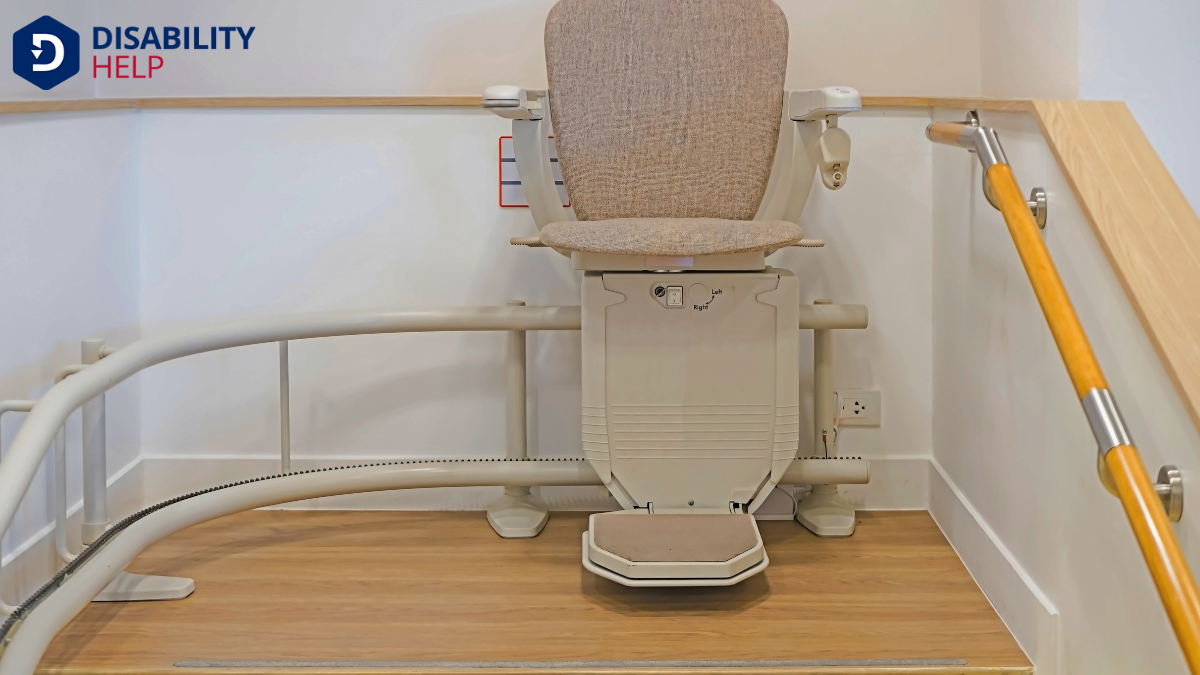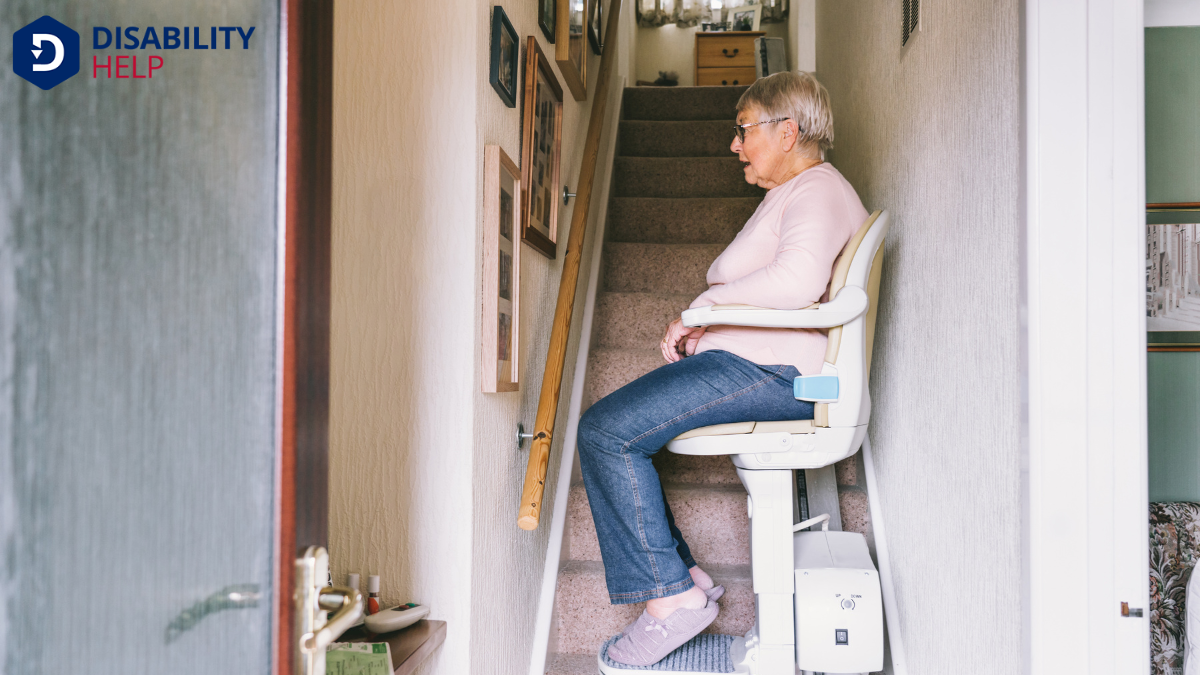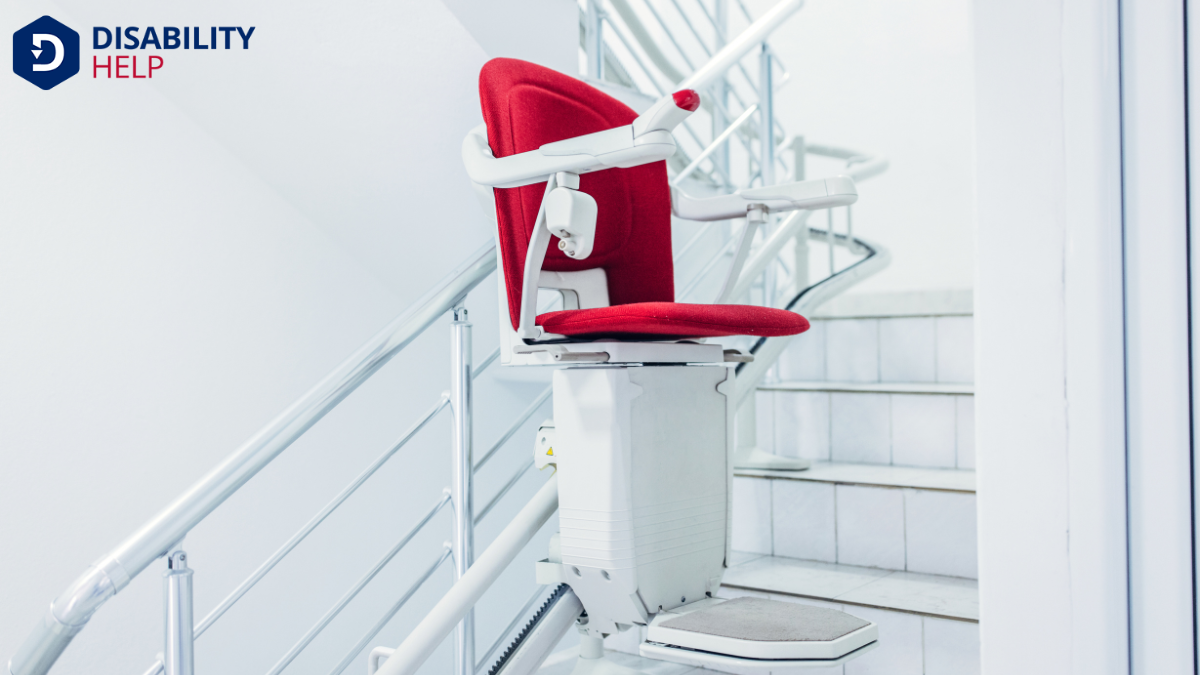Let's explore the distinctions between stair lifts and chair lifts, as they often get confused. We understand these devices enhance mobility, but their applications and features differ considerably. Stair lifts are primarily used indoors on staircases, while chair lifts are more common in public or recreational areas like ski resorts. Curious about how each one works and which might suit your needs best? Let's plunge into the details together.
Key Takeaways
- Stair lifts are primarily used in homes to assist individuals with mobility challenges in navigating stairs safely.
- Chair lifts are commonly found in recreational and public spaces like ski resorts and stadiums for vertical mobility.
- Stair lifts are installed along staircases, while chair lifts operate on a vertical track similar to an elevator.
- Stair lifts are tailored for specific staircase layouts, whereas chair lifts cater to larger, open areas.
- Installation for stair lifts involves more structural considerations compared to chair lifts, which require flat, sturdy flooring.
Understanding Stair Lifts
Stair lifts are essential devices that provide a safe and convenient way for individuals with mobility challenges to navigate stairs. We often see these lifts installed in homes where traditional staircases become barriers.
With a sturdy rail attached to the stairs and a comfortable seat, stair lifts transport users smoothly and securely between floors. We can control them with easy-to-use buttons or a remote, making independence more accessible for many people.
Installation is straightforward, and the lifts are designed to fit various staircase configurations, whether straight or curved.
Understanding Chair Lifts
While stair lifts focus on aiding movement along staircases, chair lifts serve a different purpose by assisting with vertical mobility in various settings.
We encounter chair lifts mainly in recreational areas, like ski resorts, where they transport us up mountains effortlessly. Besides recreation, chair lifts play an essential role in public and commercial spaces, such as theaters or stadiums, where they help people reach different levels without using stairs.
In daily life, chair lifts can be a game-changer for those with limited mobility, allowing them to access elevated areas safely and comfortably.
Unlike stair lifts that follow the staircase's path, chair lifts often operate along a vertical track, similar to an elevator. Understanding their purpose helps us appreciate how they enhance independence and accessibilityThe design of products, devices, services, or environments to be usable by people with disabilities.....
Key Features of Stair Lifts

Let's explore what makes stair lifts a valuable addition to our homes.
We'll look at the installation and design options that fit various staircases, the safety and security features that give peace of mind, and the weight capacity and comfort that guarantee a smooth ride.
Understanding these key features will help us make informed decisions about which stair lift best suits our needs.
Installation and Design Options
When considering the installation and design options for stair lifts, it's essential to focus on the specific needs of your home and personal preferences.
We should first assess the staircase layout—whether it’s straight, curved, or spiral—as this impacts the type of stair lift needed. Straight stair lifts are typically more straightforward to install, while curved models require custom tracks.
Let's also think about the aesthetics and how they’ll blend with your home decor. Many stair lifts offer a range of colors and finishes to match your style.
Additionally, consider the available space. Compact designs are ideal for narrow staircases.
Finally, installation usually requires professional assistance to guarantee everything functions safely and smoothly. By customizing these elements, we can make certain the stair lift fits seamlessly into our home.
Safety and Security Features
Safety and security are paramount considerations when choosing a stair lift, and several key features guarantee our peace of mind.
First, we often find safety sensors that detect obstacles on the stairs, preventing accidents by stopping the lift. This feature is essential in securing both the safety of the rider and the integrity of the lift.
Additionally, seat belts are standard, keeping us securely in place during transit. Locking swivel seats make it easier and safer to get on and off the lift, preventing falls.
Moreover, most stair lifts come with battery backup systems. This guarantees that even during a power outage, our stair lift remains operational, allowing us to move between floors without worry.
These thoughtful features collectively enhance our sense of security and independence.
Weight Capacity and Comfort
While exploring the essential features of stair lifts, weight capacity and comfort emerge as critical factors. It's important for us to guarantee that the stair lift we choose can safely support the user’s weight. Most models accommodate between 250 to 400 pounds, but we should always verify the specifications to suit individual needs.
Comfort is equally significant. We need to take into account seat padding, adjustability, and armrest support. A well-cushioned seat provides a more pleasant ride, while adjustable features cater to different body sizes and preferences.
Additionally, some stair lifts come with swivel seats, making it easier and safer to get on and off. By prioritizing these factors, we enhance the overall experience, promoting safety and ease for daily use.
Key Features of Chair Lifts
Chair lifts offer a range of features that enhance mobility and convenience for users in various settings. As we explore these, let's focus on what truly matters: ease of use and reliability.
Most chair lifts come with a user-friendly control system, allowing us to operate them effortlessly. Safety is paramount, so features like seat belts and sensors that detect obstacles guarantee our peace of mind.
Many models also swivel, making it easier for us to get on and off. Additionally, chair lifts often include adjustable seat heights and padded seats, providing comfort tailored to our needs.
With battery backup systems, chair lifts continue to function even during power outages, assuring continuous support. These features work together to deliver a seamless experience.
Applications of Stair Lifts
Let's explore how stair lifts improve accessibility in both homes and businesses.
In residential settings, they offer a practical solution for individuals who struggle with stairs, allowing them to move between floors safely and independently.
Commercially, stair lifts are installed in places like offices and public buildings to guarantee everyone, regardless of mobility challenges, can access different levels with ease.
Residential Usage Scenarios
When considering residential stair lift applications, it's important to understand the specific scenarios where they can enhance daily life.
Stair lifts are invaluable for individuals with mobility challenges, allowing them to navigate between floors effortlessly. Imagine a loved one regaining independence as they move from the living room to the bedroom without assistance. These lifts guarantee safety, reducing the risk of falls on stairs.
In homes with multiple stories, stair lifts become essential tools for aging in placeThe ability to live independently and safely in one's home as one ages, often with support services..... They allow us to remain in familiar surroundings without the need for costly renovations or relocation.
Additionally, they offer peace of mind for family members knowing that mobility barriers are minimized. Each installation is tailored to the unique layout of our homes, ensuring seamless integration and usability.
Commercial Installation Examples
Businesses and public buildings increasingly rely on stair lifts to enhance accessibility and compliance with regulations. We’ve seen them in places like schools, offices, and shopping centers, making a significant difference for individuals with mobility challenges.
Stair lifts help us guarantee that everyone can access different levels of a building safely and comfortably, which is vital for inclusivity.
In commercial settings, stair lifts are often customized to fit specific architectural designs, guaranteeing they blend seamlessly with the existing environment. They’re not just practical; they also meet legal requirements for accessibility, which is fundamental for businesses to avoid potential fines or legal issues.
Applications of Chair Lifts

While chair lifts and stair lifts are often mentioned together, their applications differ considerably.
Chair lifts primarily serve outdoor and recreational environments, offering us a different kind of mobility. We find chair lifts in ski resorts, where they transport skiers up the slopes, allowing us to enjoy winter sports without the exhausting climb. They also operate in amusement parks, providing scenic rides or easy access to elevated attractions.
Chair lifts are essential in settings where terrain or distance makes walking impractical or impossible. Unlike stair lifts, which focus on overcoming architectural barriers within buildings, chair lifts cater to the need for accessibility and convenience over larger outdoor areas.
Installation Considerations for Stair Lifts
When we consider installing a stair lift, we need to think about both space and structural requirements.
It's important to guarantee that our staircase can accommodate the lift and that there's appropriate support for safe installation.
Additionally, we'll want to check the electrical and power needs to make certain our home can handle the lift's operation efficiently.
Space and Structural Requirements
Installing a stair lift requires careful consideration of space and structural requirements to guarantee a smooth and safe operation.
First, we need to assess the width of the staircase. Stair lifts generally require a minimum width to ensure the seat and footrest can move freely without obstruction.
Let’s not forget about the staircase’s structural integrity. The stair lift’s rail will usually be mounted onto the treads, so we must verify they can support the weight and force exerted during use.
Additionally, we should consider potential obstacles like door frames or tight turns that could impede installation.
Confirming these elements are addressed helps us avoid complications and promotes a seamless integration into our home’s existing architecture.
Electrical and Power Needs
Having assessed the spatial and structural elements of stair lift installation, let's focus on the electrical and power needs that guarantee its reliable operation.
Stair lifts usually require a dedicated power source, often a standard household outlet. It’s vital to confirm the outlet is nearby to prevent extension cord hazards.
Most stair lifts are battery-operated with a charging station at either the top or bottom of the stairs, allowing them to function during power outages.
We should verify that the electrical system in our home can support the lift’s power needs without overloading circuits. Consulting with an electrician can help us verify everything is up to code and safe for long-term use.
Installation Considerations for Chair Lifts
Understanding the installation considerations for chair lifts is vital, especially if we're planning to enhance home accessibility.
First, we need to assess the available space. Chair lifts require enough room for safe movement and support structures. It's important to measure the area accurately to guarantee the lift fits comfortably without obstructing pathways.
Next, we should consider the type of flooring. Chair lifts are typically installed on flat, sturdy surfaces. If our floor isn't level, adjustments might be necessary. Additionally, identifying a reliable power source is important since chair lifts often require an electrical outlet nearby.
Lastly, professional installation is recommended. Experts verify safety standards are met, providing peace of mind.
Cost Comparison
When evaluating the cost of stair lifts versus chair lifts, it’s essential to take into account several factors that impact overall expenses. First, consider the initial purchase price. Stair lifts generally cost more than chair lifts due to their complex installation and customization requirements, especially for curved staircases.
We should also factor in maintenance costs, which can vary based on the model and frequency of use.
Next, assess installation expenses. Chair lifts often require less labor and time, making them typically cheaper to install.
Don’t forget to evaluate long-term costs like energy consumption. Stair lifts might use more electricity, impacting our utility bills over time.
Choosing the Right Mobility Aid

How do we determine the best mobility aid for our needs? First, we assess the specific challenges we face daily. Is stair navigation the biggest hurdle, or do we need more general assistance moving around?
For staircases, a stair lift might be ideal, providing a safe and efficient solution. However, if broader mobility support is required indoors and outdoors, a chair lift could be more versatile.
Next, we consider our living environment. Are our staircases straight or curved? Is there enough space to accommodate the equipment?
We must also factor in our budget, as costs can vary greatly between options.
Ultimately, the right choice enhances our independence while ensuring safety and comfort. Let’s take time to evaluate our unique situation carefully.
Conclusion
In exploring stair lifts and chair lifts, we’ve seen how each serves unique mobility needs. Stair lifts offer a practical solution for maneuvering indoor staircases, while chair lifts enhance accessibility in recreational and public settings. When choosing between them, let's consider the specific requirements of our environment and the users' needs. By weighing these factors, we’ll guarantee we select the right mobility aid, enhancing safety and independence in our everyday lives.






